The rain is falling in heavy sheets, the windshield wipers beating time in an effort to keep up. Some other drivers have begun pulling off to the side waiting for things to clear up, but we only tip deeper into the throttle as we slice our ways through the corners on our drive through the heavily wooded hills of Tennessee.
We’ve got miles to put on, and the 2018 Alfa Romeo Stelvio seems to be relishing the drive. Sometimes, it’s maneuvering through the worst conditions that reveals the most about a new vehicle, and by the end of our journey we’ll be learning a lot about the Stelvio, the Italian automaker’s first-ever SUV.
Just starting to roll into showrooms across the U.S., the Stelvio is Alfa’s third new product line, sharing space with the little 4C sports car and the only recently introduced Giulia on dealer lots. Though longer and taller than the sports sedan, the SUV shares the same mechanical underpinnings and, as we quickly learn, pleasantly similar driving dynamics. The Giulia was a revelation to drive and now, with the arrival of the Stelvio, Alfa is more than justifying its existence with the sort of performance model the SUV-crazed American market has been waiting for.
(SUVs could soon make up half the U.S. new vehicle market. Click Here for the story.)
Like seemingly all things Italian, Alfa’s SUV has a few, shall we call it, “eccentricities.” But that seems to only add to its appeal. All too many utes seem to blur together. The Stelvio, if our first drive is any indication, is a real standout, delivering the sort of roominess, high seating position and overall comfort that SUV buyers expect, without sacrificing the performance and handling that Alfa Romeo is known for.
Of course, you’d expect the automaker to deliver such surefootedness considering its first SUV is named for the daunting Stelvio Pass, the toughest route through the Italian Alps where, over the course of just 12 miles, a traveler will climb as high as 9,000 feet and maneuver around 48 hairpin turns.
Visually, the Stelvio’s face should be more than familiar to anyone who has already seen the Giulia – or pretty much any Alfa since the debut of the 1938 8C. There’s the classic “Scudetto,” or triangular shield, that is anchored by two lower grilles – the combination know to aficionados as the “Trilobo.” Cats-eye headlamps framed by LED running lights complete the package.
Twin character lines give a sculpted feel to the Stelvio’s silhouette. It’s not quite Michaelangelo’s David, but there’s an immediately muscular feel, especially when you’re riding on the Ti Sport model’s 20-inch dark alloy wheels. The Stelvio’s taillights wrap from the rear quarter panel into the power-lift hatchback. The tail has numerous creases of its own, though it does give the rear end a bit of a busy look.
Lift the body and you’ll find the same, so-called Giorgio Architecture first used for the 2017 Alfa Romeo Giullia. It’s essentially a rear-drive platform, unlike so many modern crossovers that opt to deliver power primarily to the front wheels. The Stelvio has the same, 111-inch wheelbase as the Giulia but, at 184.6 inches, it’s about two inches longer. It also stands 8.9 inches taller, at the peak of its slightly coupe-like roofline, and the SUV has an additional 2.5 inches of ground clearance.
As with the Giulia, the Stelvio engineering team strived to keep things balanced, and the ute boasts a 50:50 weight distribution. The suspension is double-wishbone front and up front, with a multilink rear.
Under normal driving conditions, the powertrain is rear-biased, and up to 100% of the engine’s ample torque can be delivered to the rear axle. If needed to enhance grip, however, up to 60% of that torque will be shifted to the front wheels through the Active Transfer Case. Stelvio also features a limited slip differential to move torque left or right, as needed.
Incidentally, don’t bother asking your dealer if you can get the rear-drive option. The Stelvio will be offered exclusively with all-wheel-drive.
When Alfa introduced the U.S. version of the Giulia, it opted to come to market first with the Quadrifoglio, the name shared by the Italian automaker’s most powerful models. Lower power – and price – versions have only recently been added to the line-up. At launch, Stelvio is getting a turbocharged 2.0-liter inline-four making 280 horsepower and 306 pound-feet of torque that is paired with an eight-speed ZF automatic transmission.
(Those who want the ultimate in performance, don’t lament. The Stelvio Quadrifoglio will make its appearance early next year. While final figures haven’t been released, it will share the same 2.9-liter six-cylinder engine with 90-degree layout that, in the Giulia, churns out 505 hp and 443 lb-ft of torque.)
A quick look at the stats shows that the new Stelvio stands tall amidst the SUV competition, offering more power and torque than the Audi Q5, Porsche Macan, Jaguar F-Pace and everything else in its class. It also boasts a higher top speed, and is quicker off the line, with a 0-60 time of 5.6 seconds.
Considering those numbers, another stat that impressed us was Stelvio’s 22 mpg City, 28 Highway, 24 Combined EPA fuel economy rating. Give some credit to the extensive use of lightweight materials like aluminum and magnesium, as well as the carbon fiber driveshaft.
What’s intriguing about the Stelvio is how it can look big – with a well-appointed interior that seems a step larger than the compact category it technically falls into. But, like Giulia, it feels smaller and more nimble when you get behind the wheel – especially when you switch the knob located in the center of the console to “D.” That’s short for Dynamic Mode, one of the three options a driver has. In a kitschy little move, the others are Natural and Advanced Efficiency – what others would dub Eco.
The mode selector affects a variety of vehicle functions, including engine throttle mapping, transmission shifts, body dynamics, stability control and steering. For around-town tooling, N and A might be just fine, but working our way along the wet and greasy roads near the Natchez Trace Parkway, we found it wise to switch to D, if for no other reason than to tighten up the Stelvio’s steering.
The overall difference in Dynamic Mode is immediately apparent as we slalom through the backwoods country an hour from Nashville. Steering is taught, precise and offers just the right amount of feedback to the driver. Also a plus: Continental CrossContact LX Sport 235/60R18 run-flat all-season tires on the the Stelvio Ti Sport we spent the day in.
The Alfa Romeo Stelvio is the sort of vehicle that immediately enhances one’s confidence. On the rare occasion when we overcook a corner the wheels emit no more than a momentary squeak. Only once, on a particularly greasy bit of pavement does the rear end briefly slide, immediately regaining composure. On the whole, there is the merest of body roll and head toss.
That said, a few nits we’ll pick. The ZF eight-speed is significantly more mannered than the gearbox in some other products offered by Alfa parent Fiat Chrysler Automobiles. (Yep, you Jeep Grand Cherokee owners know what we’re talking about.) We seldom experienced any of the hunt-and-seek issues that have been a regular complaint. But it did happen a few times during braking and with the Stelvio’s rev-matching feature we found the engine actually seeming to speed up as we wanted to slow down. It wasn’t a major issue but did require a bit extra push on the brakes.
The good news here is that the Stelvio boasts 13-inch four-piston Brembos up front and 12.5-inch single-piston units in back. (And, as with the Giulia, expect an even bigger, more aggressive package once the Quadrifoglio-trimmed SUV arrives.)
We’d also have liked a version of the terrain control system found on so many other modern utes, including both that Grand Cherokee and FCA’s other luxury SUV, the Maserati Levante. According to Alfa’s North American boss, Pieter Hoogeveen, Alfa simply doesn’t expect owners to be going off-road. They’re likely right. Industry stats suggest that even with the Grand Cherokee and Land and Range Rover models, the number of motorists who ever see anything rougher than a gravel road is typically in single digits.
Nonetheless, such a feature is a useful way to quickly adapt ride and vehicle functions to changing pavement and weather conditions, including rain, snow and ice.
(Alfa set to expand U.S. dealer network. Click Here for details.)
One thing we won’t complain about is the Stelvio’s cabin. Inside, Alfa has lived up to its Italian heritage, with a clean yet sumptuous cabin that is both roomy and well-appointed. The infotainment system is reasonably easy to use, thanks to the control knob on the center console. There’s also a volume knob, but none for tuning, Alfa opting for simplicity in controls.
The 8.8-inch screen is not touch, by the way, in line with many other Europeans. One complaint: when in reverse, the portion of that screen devoted to the backup camera is a bit skimpy.
The overall look is both elegant and uncluttered, with some lovely leather, wood and metal accents reminding us of the latest in Italian furniture design. It all not only looks good but has a delightful tactile feel. The interior is also roomy, front and back, with plenty of head, knee and legroom.
As for seating, the 12-way front power seats give ample support while also being plenty comfortable after a long drive. The additional power bolstering in the Stelvio Ti Sport is a must for those who are likely to do some aggressive driving.
The Ti, incidentally, is more package than trim level, adding a number of niceties, including heated seats and steering wheel. A surprise, however, was the lack of seat coolers. Perhaps on the Quadrifoglio?
We won’t get pricing on that performance model until later this year, at the earliest. But Alfa confirmed that the base Stelvio will come in at $41,995, the Ti jumping to $43,995. Our fully equipped 2018 Alfa Romeo Stelvio Ti Sport took the figure up to $54,090. (Add another $995 for delivery charges.)
Even the “base” car comes with plenty of upscale details, like leather seating, bi-xenon headlamps, a power tailgate, dual exhaust, and more. Upgrades and options include larger wheels, a huge panoramic sunroof with accent lighting surround, those sport seats and other niceties.
Like many of our automotive media colleagues, we spend a lot of seat time in a variety of different vehicles. It’s more of a job than many neighbors think, seeing the procession of products that roll in and out of the driveway. One way we measure the merits of any new product is what we inelegantly call the “turnback factor.” How sad are we when it comes time to hand back the keys. When it came to the Alfa Stelvio we’d have been happy to hold on a bit longer – and we’re certainly looking forward to a more extended drive later this year.
We were excited to hear Alfa lay out plans for a U.S. return a few years back. Its initial offering, the 4C, is a mixed bag – fun, but limited in appeal and a bit on the costly side. The Giulia was a revelation, especially in Quadrifoglio trim. It’s elegant and an absolute hoot to drive. Now comes Alfa’s concession to market realities, the global shift from passenger cars to light trucks. It’s hard to imagine a better entry into the SUV segment. Because of its sporting appeal, the Italian maker is still expecting about half of its buyers will opt for the Giulia sedan. But many buyers will discover there’s little to give up, and a lot to get in terms of flexibility and functionality, with the Alfa Stelvio SUV. It’s a winning combination.
(For still more on the Stelvio, Click Here.)

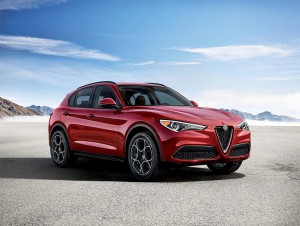

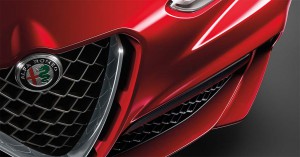
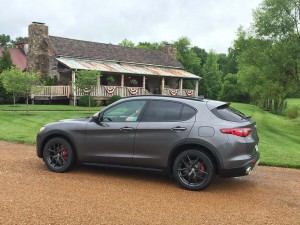
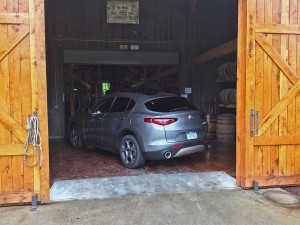

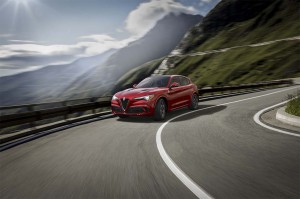
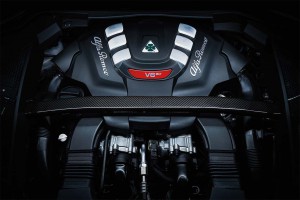
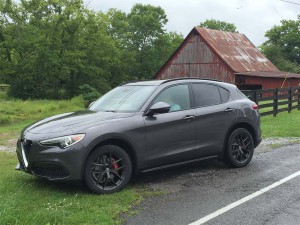
Are we looking at the basis for an SRT Cherokee or are the dimensionals more inline with the Grand Cherokee? If so, the new Durango?
I don’t think so. But let me find out more.
Paul E.